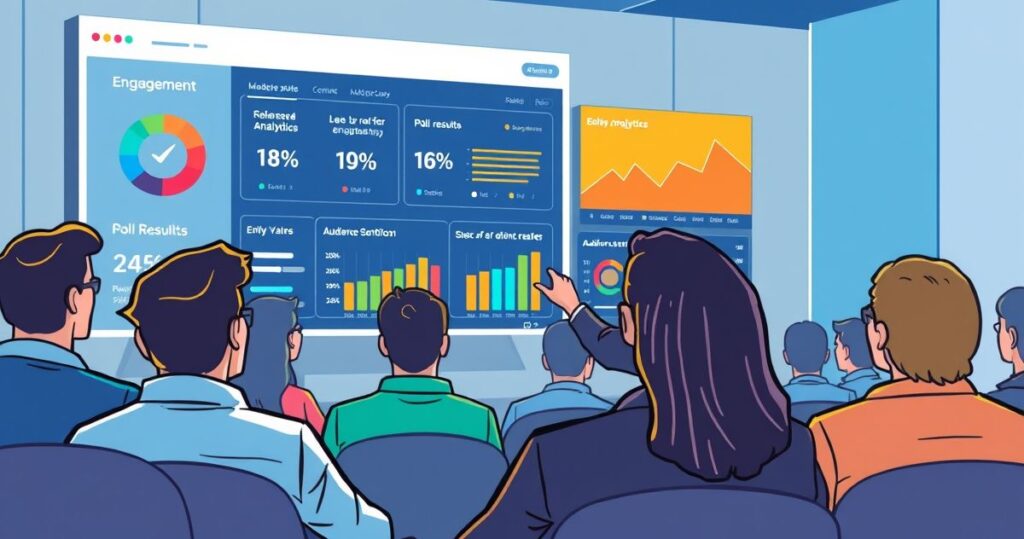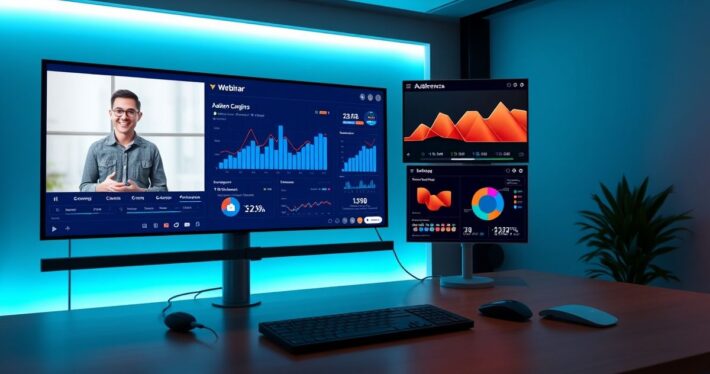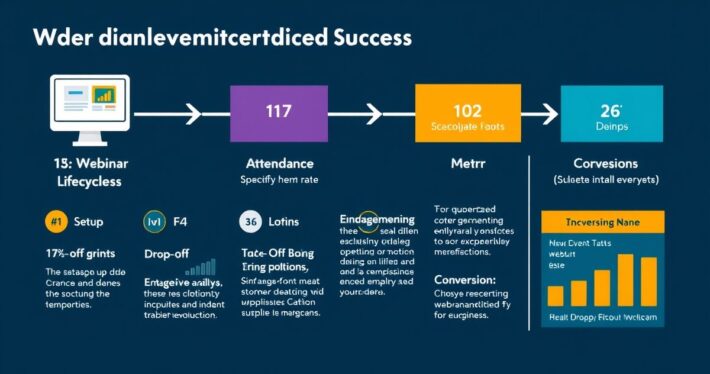How real-time data is reshaping the way webinars are run.

Webinars have come a long way from static presentations to dynamic, interactive experiences. But what’s truly revolutionizing the way we run webinars? Real-time data. Imagine having a live dashboard that tells you exactly what your audience is thinking, feeling, and doing during your webinar. Sounds like magic, right? Well, it’s not—it’s just smart technology doing its job. Real-time data is transforming how webinars are executed, making them more engaging, personalized, and effective than ever before.
The Power of Real-Time Data in Webinars
Let’s face it: running a webinar without real-time data is like driving a car without a dashboard. Sure, you can still get somewhere, but you’re missing critical feedback on speed, fuel levels, and potential hazards. Real-time data provides actionable insights during your webinar, allowing you to adapt on the fly.
Think about it: How many times have you wondered if your audience is actually engaged or if they’re just scrolling Instagram? Real-time analytics can answer that question with metrics like:
- Live attendance vs. drop-off rates
- Poll responses and Q&A participation
- Chat engagement and sentiment analysis
- Clicks on CTAs and offers
With this data at your fingertips, you can pivot your strategy mid-webinar to keep your audience hooked.
Personalization: The Game-Changer
Here’s where it gets interesting. Real-time data isn’t just about numbers—it’s about understanding your audience on a deeper level. For example, let’s say you’re hosting a webinar on digital marketing. You’ve got a diverse audience, from freelancers to enterprise-level marketers. Real-time data can help you segment your audience and tailor your content accordingly.
Case in point: During a recent webinar I ran, live polling revealed that 70% of attendees were freelancers. Instead of sticking to my prepared corporate-focused slides, I shifted to emphasize strategies for solopreneurs. The result? Higher engagement and a surge in post-webinar sign-ups. That’s the power of personalization.
Boosting Engagement Through Immediate Feedback
Let’s be honest—webinars can feel one-sided if you’re just talking at your audience. Real-time data flips the script by creating a two-way conversation. Tools like live polls, Q&A, and chat analytics allow you to gauge audience sentiment and address concerns immediately.
For instance, if you notice a spike in chat messages about a specific topic, you can dive deeper into that area. Or, if a poll reveals confusion about your pricing model, you can clarify it right away. This responsiveness not only keeps your audience engaged but also builds trust.
Optimizing Conversions with Live Insights
Here’s the real kicker: Real-time data can skyrocket your conversion rates. By analyzing live data, you can identify the exact moment your audience is most engaged and drop your offer at the perfect time.
Take this example: During a webinar I attended, the host noticed a surge in positive chat messages and poll responses after explaining a specific feature. Instead of waiting until the end, they presented their offer right then and there. The result? A 30% higher conversion rate than their previous webinars. That’s the kind of impact real-time data can have.
Challenges and How to Overcome Them
Now, I’d be remiss if I didn’t mention the challenges of using real-time data. For one, it can be overwhelming to process so much information while delivering a webinar. The key is to have a co-host or moderator who can monitor the data and provide actionable insights.
Another challenge is ensuring data accuracy. Not all tools are created equal, so invest in reliable webinar platforms with robust analytics capabilities. And remember, data is just a tool—it’s how you use it that matters.
The Future of Webinars: Data-Driven and Dynamic
As technology continues to evolve, the role of real-time data in webinars will only grow. Imagine AI-powered platforms that analyze audience behavior and suggest personalized content in real time. Or tools that predict drop-off points and automatically adjust your presentation to keep viewers engaged. The possibilities are endless.
So, what’s the takeaway here? Real-time data isn’t just reshaping webinars—it’s redefining them. It’s making them more interactive, more personalized, and more effective. And if you’re not leveraging it, you’re leaving money on the table.


